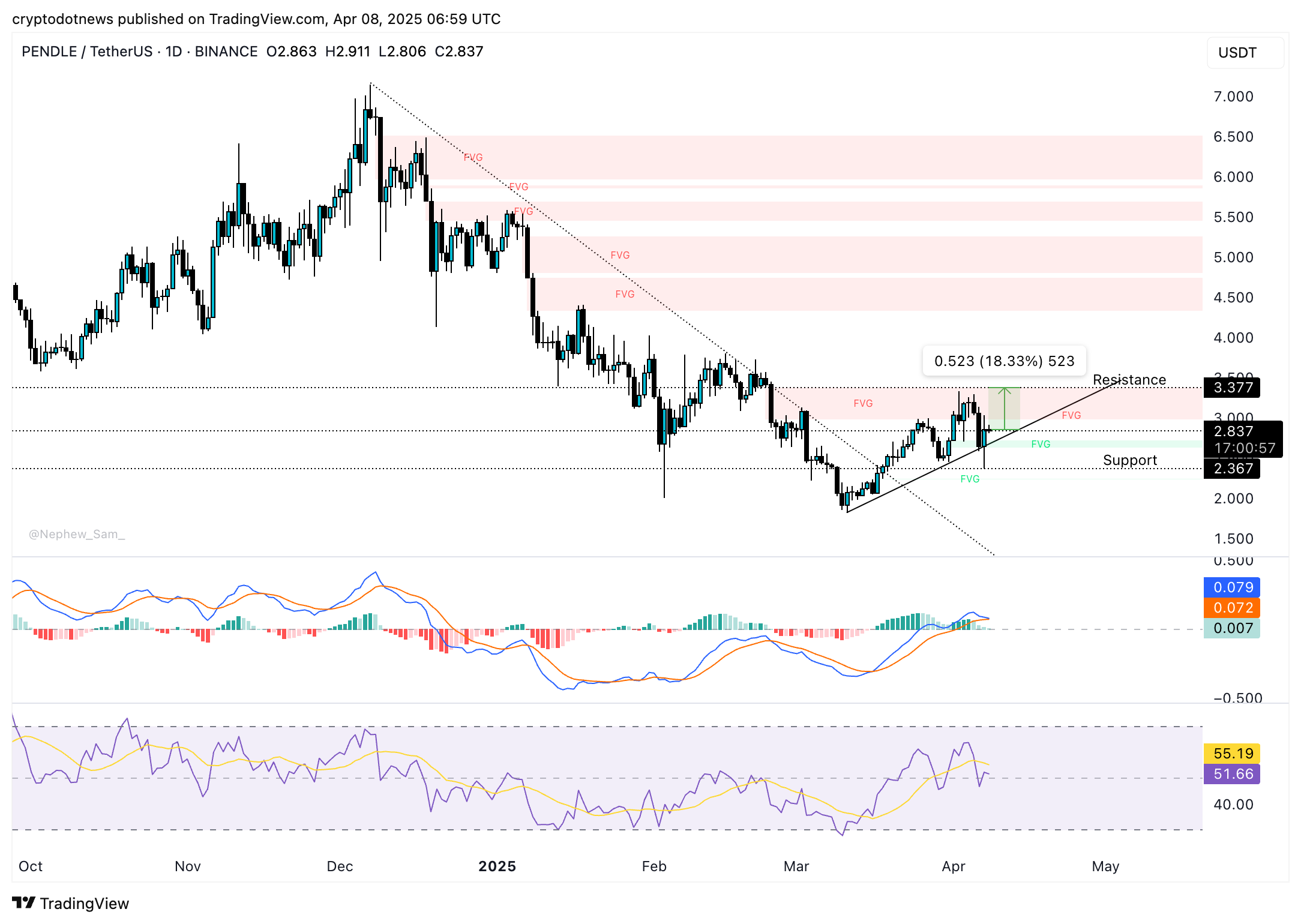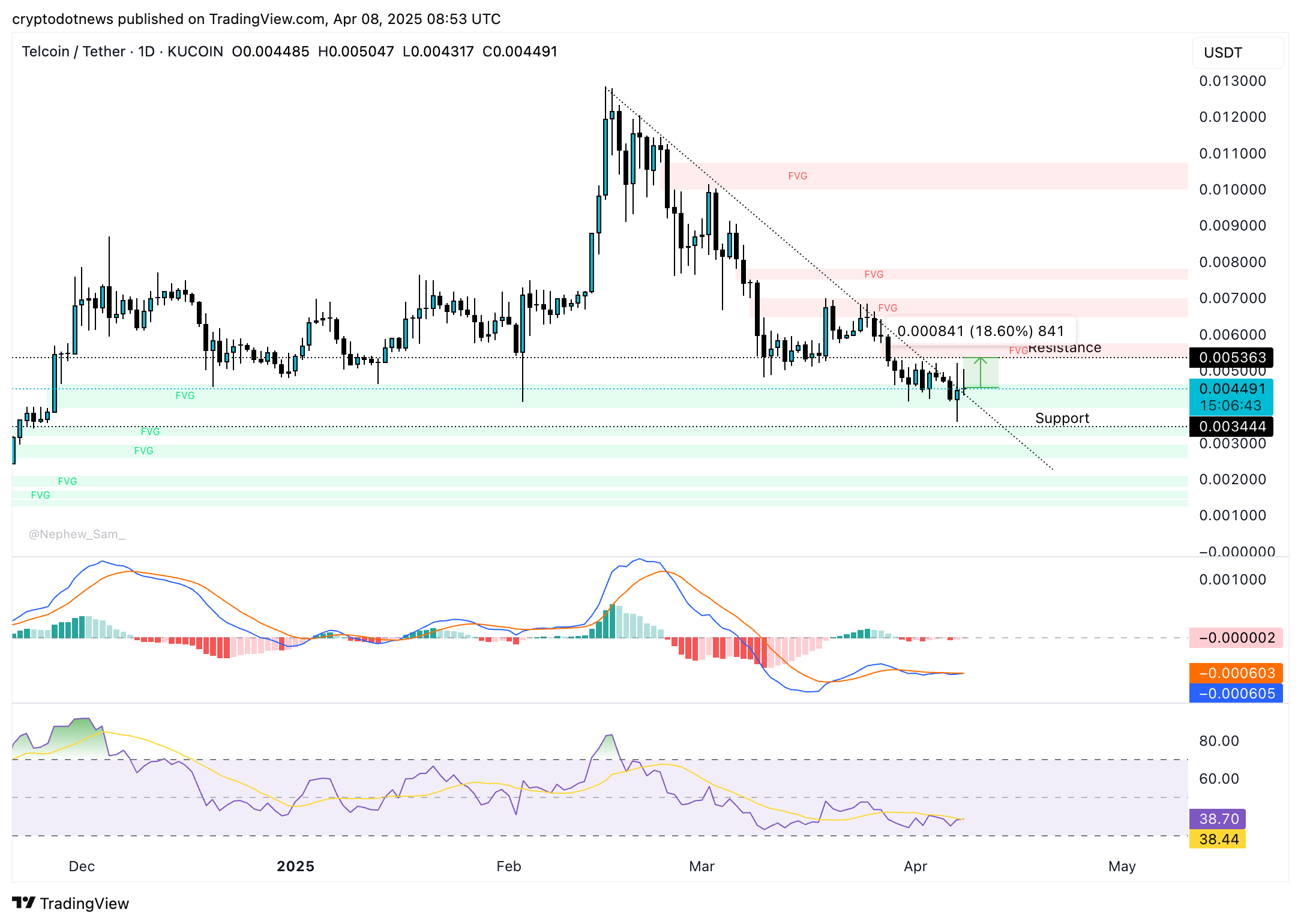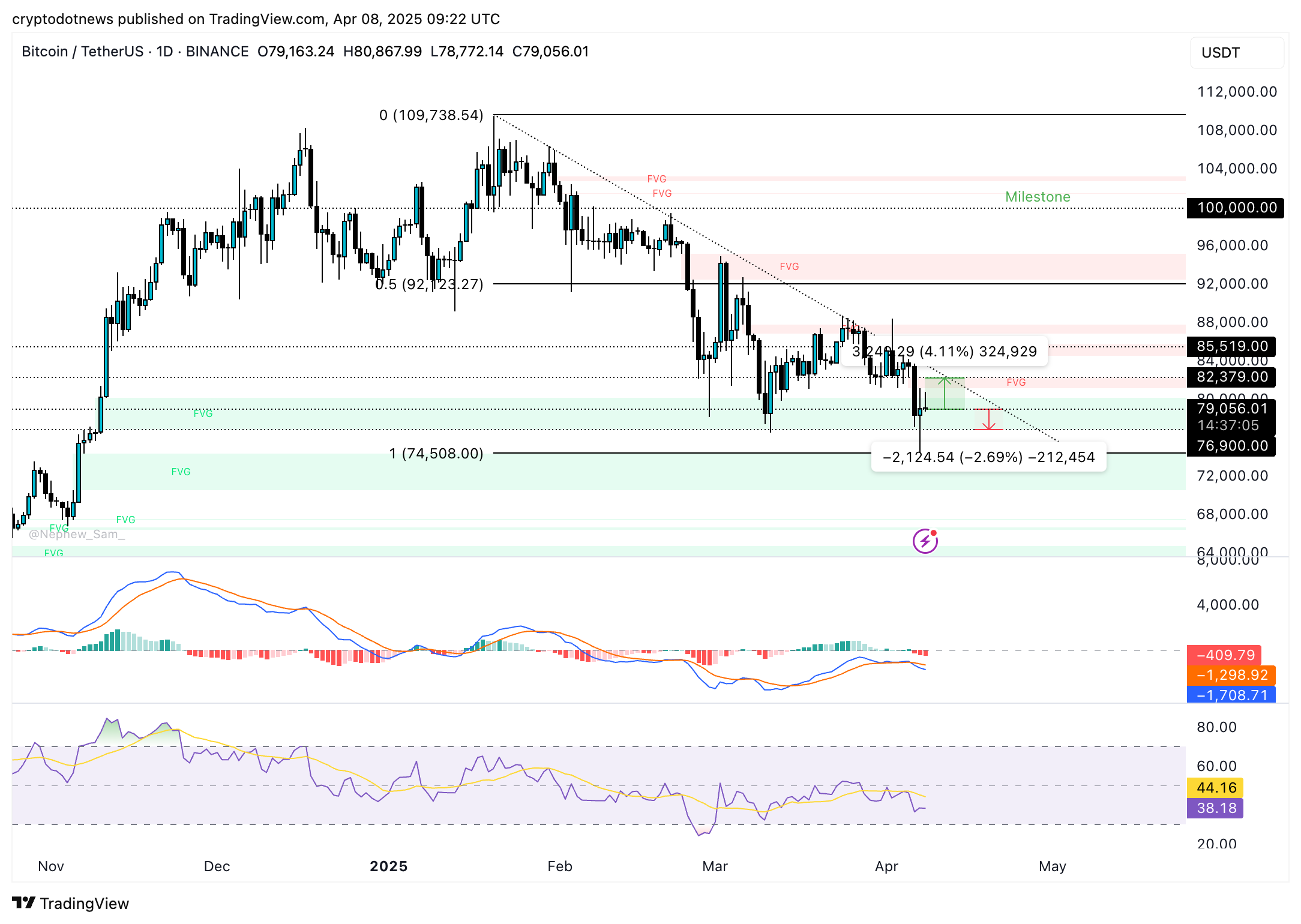The United States’ first Bitcoin President is overseeing a collapse in the cryptocurrency market. Supporters and companies within the crypto sphere contributed to Trump’s campaign, anticipating favorable regulations and policies for cryptocurrency in the U.S. While there was some initial advancement on the stablecoin legislation and the Strategic Bitcoin Reserve, Trump’s recent tariff declarations are reshaping the global economic landscape.
Bitcoin (BTC) and various altcoins have plummeted alongside global currencies and stocks, losing their status as the “digital gold.” Traders who viewed Bitcoin and cryptocurrencies as a safeguard against market downturns are now faced with uniform challenges due to Trump’s tariffs impacting all asset classes.
US Crypto President’s tariffs wipe out Bitcoin surges
In 2024, the president contended with multiple lawsuits, and now, as the first crypto-focused president, he boasts a net worth of $5.1 billion, according to the 2025 Billionaire List. In less than 100 days in office, Trump has turned his legal struggles into a comeback, causing a decline in global markets and negating Bitcoin gains.
Just months ago, crypto enthusiasts established Political Action Committees to support the first pro-crypto president. Now, however, Bitcoin holders and traders experience the pain of multiple flash crashes, with BTC hitting a new cycle low of $74,500 on Monday.
Bitcoin managed a quick recovery, and as of Tuesday, BTC is consolidating below the crucial $80,000 mark.
Top 3 tokens for navigating the crypto market decline
The crash in the cryptocurrency market on Monday erased around $300 billion in market capitalization. Yet, three types of tokens have remained resilient: liquid staking derivatives, top payment solution coins, and tokens from the Bittensor ecosystem.
According to data from CoinGecko, the leading tokens in these categories include Pendle (PENDLE), Telcoin (TEL), and Bittensor (TAO).
PENDLE serves as the native token for the Pendle Finance ecosystem, allowing its holders to engage in governance and receive incentives. Those providing liquidity to the platform enjoy rewards and rebates from a percentage of trading fees.
Telcoin facilitates mobile payment solutions, while TAO from Bittensor powers subnets for AI protocols built on the blockchain.
Since mid-March, PENDLE’s price has been trending upward, forming higher highs and lows, with the potential for an additional 18% gain to test resistance around $3.377. The RSI is at a healthy 51, surpassing neutral territory, and the MACD is displaying green histogram bars above the neutral line, supporting a bullish outlook for the token.

TEL has been trading just below the resistance level of $0.005363 for almost a week, ending its downward trend. The daily price chart indicates that TEL may make an 18% upward move to retest that resistance. The RSI is at 38, resting above the oversold zone, while the MACD shows decreasing red bars, suggesting that the downward trend may soon reverse. If TEL experiences a drop, it may find support around $0.003444.

In late March and early April, TAO has been consolidating under the resistance point of $284. Momentum indicators for TAO, including the RSI and MACD, reflect potential for upward movement. The RSI is trending upward and reading 39, while green histogram bars are visible on the MACD.
An 18% rally could take TAO to retest resistance at $245.50. Conversely, a correction could push it down to test support at $167.80, marking a critical level for Bittensor.

Bitcoin Price Outlook
Bitcoin has been consolidating since its fall below the support level of $85,500, hovering now around $80,000. On the daily chart, momentum indicators suggest potential further declines in BTC’s price.
The leading cryptocurrency might test support at $76,900, indicating a possible decrease of 2.69%. A 4% upswing could bring BTC closer to its resistance at $82,379, which is the first obstacle on its way to $85,000.
The MACD is showing red histogram bars beneath the neutral line, and the RSI is trending downward at 38, suggesting a bearish outlook.

Is a surge in altcoins on the horizon?
The altcoin season index—a measure of whether it’s a time when 75% of the top 50 altcoins outperform Bitcoin—had indicated a reading of 65 in mid-March. This metric has since plummeted to 33 as of Tuesday, amidst market reactions to Trump’s tariff decisions and the resulting international responses.
As trade disputes escalate, Bitcoin is striving to restore investor faith as a refuge during periods of uncertainty, further distancing an “altcoin season.” Generally, moves of capital from Bitcoin to altcoins signal growth in other tokens. However, traders may need to bide their time before this trend materializes in the current cycle.

The CEO of a prominent DeFi application predicts a rebound in Bitcoin. He stated:
“Bitcoin’s decline today is part of a wider risk-off trend. When macro stress hits, everything tends to be sold off. However, unlike stocks, Bitcoin isn’t directly linked to earnings or central bank policy. Historically, it has rebounded stronger from macro shocks, particularly when confidence in traditional systems wavers. What we’re experiencing is not a failure of crypto but rather a movement towards liquidity.”
The CEO of Token Metrics believes the current chaos in the crypto market is part of a broader strategy. He commented:
“The market has been extremely volatile due to the ongoing tariff disputes. All risk assets, from equities to cryptocurrencies, have seen liquidity pulled to the sidelines. There’s speculation that an emergency FED meeting is on the horizon; with discussions about pausing tariffs and a willingness to negotiate from the EU. This volatility appears to be orchestrated as we edge closer to addressing national debt issues.”
This article is not intended as investment advice. The information and materials presented here are for educational purposes only.
